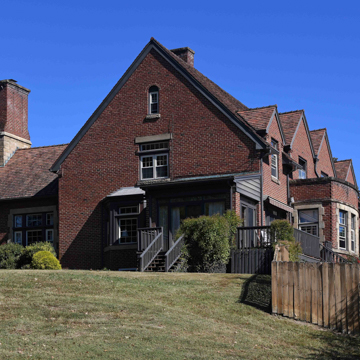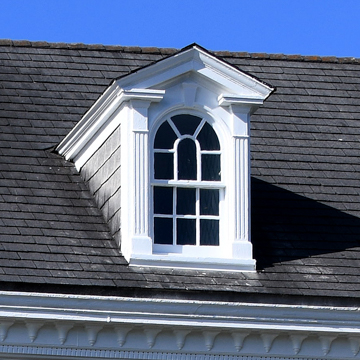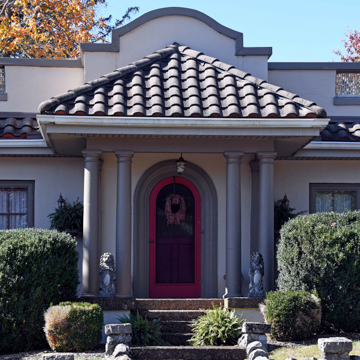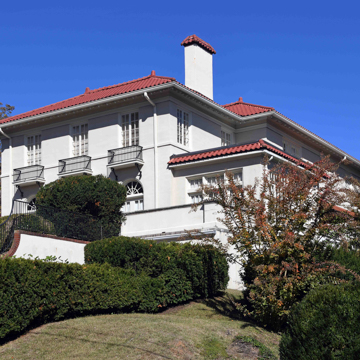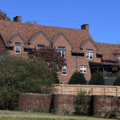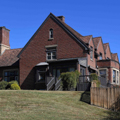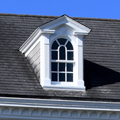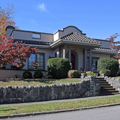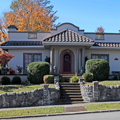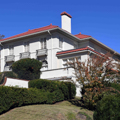The wide variety of styles that became popular from c. 1920 to c. 1940 are on show on Lawrence Avenue and adjacent streets. At 400 Lawrence (c. 1930) is a rambling Tudor Revival house of brick and stone with steeply pitched gable roofs, wall dormers, a wide interior-end chimney, and casement windows. The Colonial Revival Richard C. Homer House (c. 1940) at number 501 has a four-columned Corinthian portico, and a gable roof is pierced by three gable-roofed dormers. Nearby are two houses that exhibit Spanish influence. The Clarence and Bessie Moore House (1929; 800 Park Street) combines parapets and a red tile roof and has a projecting front porch supported by Ionic columns. At 816 Glenway Avenue, the William E. Martin House (1929) has an arcaded recessed entrance, casement windows, red tile roof, and iron balconets at the second-floor windows.
You are here
Lawrence Avenue Houses
If SAH Archipedia has been useful to you, please consider supporting it.
SAH Archipedia tells the story of the United States through its buildings, landscapes, and cities. This freely available resource empowers the public with authoritative knowledge that deepens their understanding and appreciation of the built environment. But the Society of Architectural Historians, which created SAH Archipedia with University of Virginia Press, needs your support to maintain the high-caliber research, writing, photography, cartography, editing, design, and programming that make SAH Archipedia a trusted online resource available to all who value the history of place, heritage tourism, and learning.



















